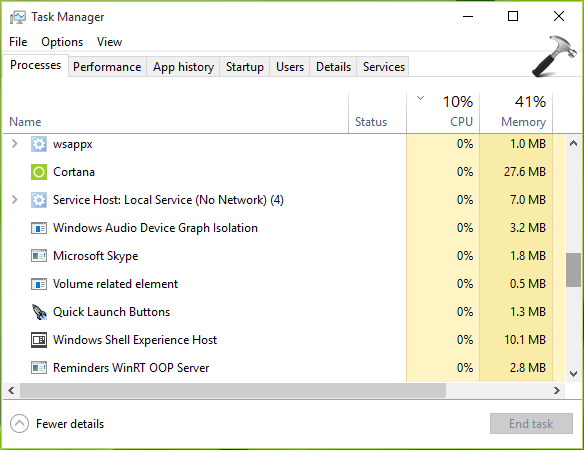


This is a rather long-winded way, but you can also make use of the Control Panel for opening the Task Manager. Related: Task Manager Not Responding? Here are 4 Ways to Fix It 6. Alternatively, you can also enter “taskmgr.exe” in the Run dialog box and hit Enter to launch the application. The Task Manger will be launched on your screen.
Go to Start menu search bar, type “taskmgr.exe,” and select the Best match. To open the Task Manager in Windows 10/11 from the taskmgr EXE file, do the following: Use the “taskmgr” from Start menu search bar Use this one if you're rushing and want to quickly launch the Task Manager. Pressing Ctrl + Shift + Esc will launch the Task Manager in just a few seconds on your screens, as opposed to Ctrl + Alt + Delete, where you’ll have to first go through the Windows Security menu. Navigate and right-click on the taskbar of your Windows 10 PC, or on the Windows icon in the taskbar on a Windows 11 PC and select the Task Manager from the diverse set of options available on your screen.Īnother shortcut on our list, the Ctrl + Shift + Esc shortcut, is slightly different from the Ctrl + Alt + Delete shortcut we've used above. From there, select the Task Manager option, and you’ll have the Task Manager window in front of you. To get started, press the Windows key + X option to open the Windows power menu. Put briefly, the Power User menu is a central place to access some of the most widely used Windows features. You can also open the Task Manager from the Power User menu in your Windows computer. From here, you're free to use Task Manager however you'd like. When you press the shortcut keys, you’ll see the Windows Security screen pop open on your screen.įrom there, click on Task Manager, and the Task Manager windows will open up. One of my personal favorites and probably the simplest one on this list, you can launch the Task Manager simply by pressing Ctrl + All + Delete together. Open the Task Manger with Ctrl + Alt + Delete 
Moreover, there’s not just one, but multiple ways that you can open the Windows Task Manager in your Windows. While the Task Manager can be used for much more than clearing non-responsive tasks and errors, here we'll focus in on how to open it so as not to digress from our topic. The last line of defense for every Windows user, the Task Manager is usually called upon when all your programs stop responding and your PC is stuck still and simply won't budge from inactivity. If you’ve been a Windows user for a while, I’m sure you would’ve come across the Windows Task Manager at least once by now.







 0 kommentar(er)
0 kommentar(er)
